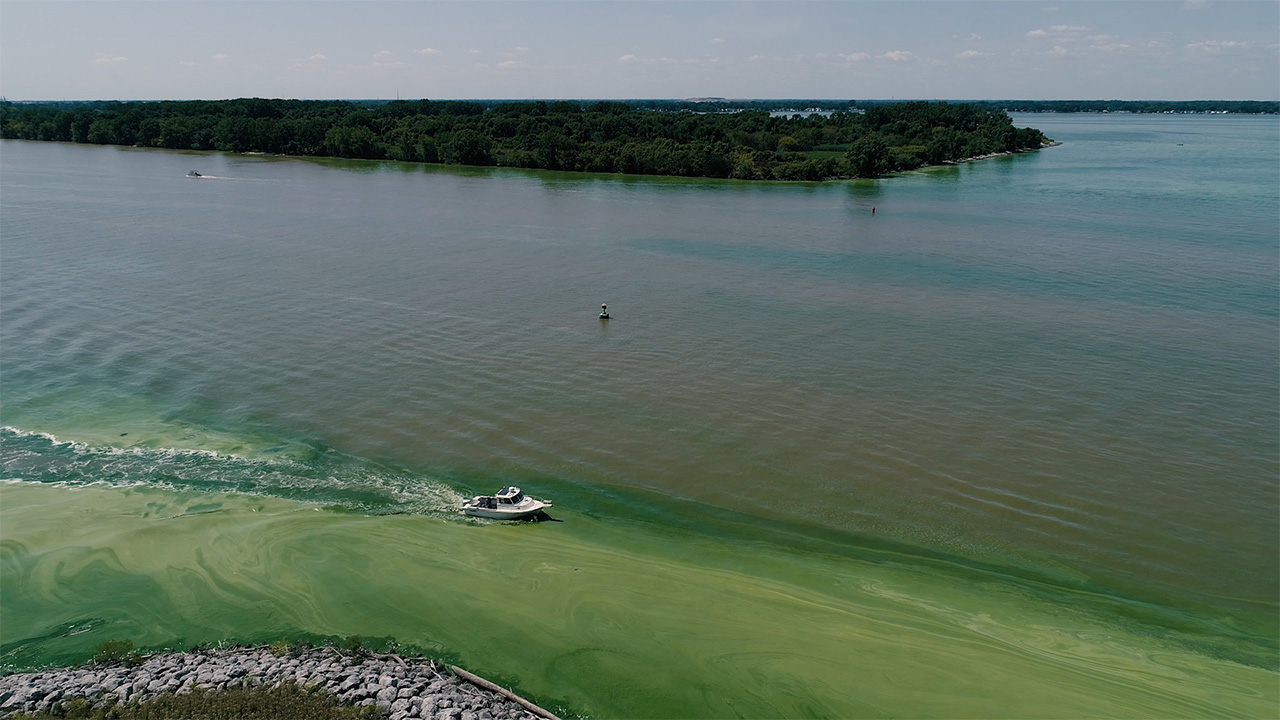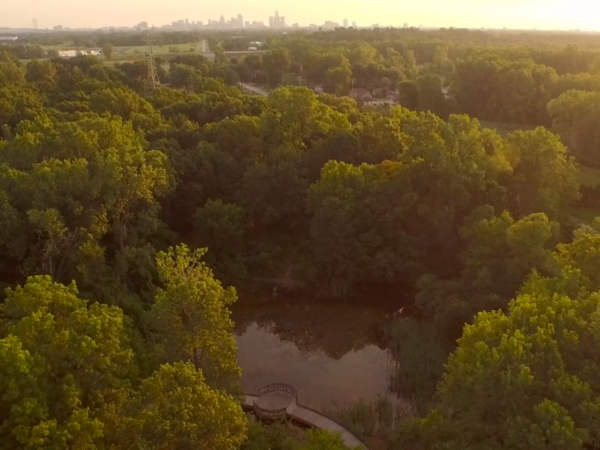
NOTE: The report will formally be presented in English at 2 p.m. ET on Thursday, Dec. 10. A French session will follow at 3:30 p.m. For more details about how you can watch or ask questions, click here.
Update: Quotes from the news conference were added to this article on Dec. 10.
Public concern about climate change is escalating in the Great Lakes region, according to a new report issued by a binational group that manages and protects the Great Lakes.
The International Joint Commission today released its triennial progress report on Great Lakes water quality. The report addresses the findings from the 21 in-person events between June and October that the IJC hosted.
“In their comments to us, the public communicated their unequivocal expectations that governments take action to restore and protect the lakes they cherish,” said IJC Canadian Section Chair Pierre Béland. “In their views, the status of the lakes as ‘fair and unchanging’ is actually a sign of inaction and the lack of progress.”
Read the report on the IJC’s website.
The Commission, with its six members, is a collaboration between the U.S. and Canada, handles transboundary issues and makes recommendations to the governments of both countries regarding Great Lakes water issues.
Climate change was propelled “from the 15th most-mentioned in 2017 to today’s top concern,” according to the report. Shared observations of changes in weather patterns and the resulting impacts on shorelines, infrastructure and water quality were offered as evidence by the public respondents who also called for “governments at all levels” to prioritize and respond to these climate change impacts.
WATCH: The Great Lakes Now Playlist on Climate Change
API key not valid. Please pass a valid API key.Also among the five topics that generated the most discussion among the 1,312 attendees at the events were nutrients, chemicals of mutual concern, aquatic invasive species and traditional ecological knowledge.
Nutrients covered concern over both agricultural nutrient runoff as well as urban combined sewer overflows.
WATCH: The Great Lakes Now Lake Erie Playlist (with several segments about nutrient runoff and algal blooms)
API key not valid. Please pass a valid API key.For chemicals of mutual concern, the main public sentiment was that the IJC’s work on regulating them was inadequate.
Regarding aquatic invasives, most people were concerned about the threat of Asian carp entering the lakes and the impacts of quagga and zebra mussels on the system.
The topic of traditional ecological knowledge reflected the desire from both Indigenous and Nonindigenous individuals for more Indigenous knowledge and Nations to be involved in the IJC’s work.
The findings in the report were gathered from the attendees of the 21 events, as well as through an online survey that had more than 700 respondents. A record of comments from the events is available online at the IJC’s 2020 Triennial Assessment of Progress Story Map.
The IJC made three recommendations to U.S. and Canadian governments in the report:
- A better framework to assess the effectiveness of programs and actions taken by either government to restore and maintain the water quality of the lakes.
- Governments should take action on Lake Superior’s emerging algal bloom problem. The IJC explained in the report that the majority of research and action on algal blooms has thus far been focused on the lower lakes.
- Better public engagement in programs and when releasing information.
“Obviously our coastlines are important everywhere, but the Great Lakes are such an important asset that we both share, and we do a pretty good job sharing, and it’s something that I believe in the future will become more and more important,” said IJC U.S. Section Chair Jane Corwin.
This report is the second triennial report released since the Great Lakes Water Quality Agreement’s most recent revision in 2012. It covers the period of 2017 to 2019. The next report is scheduled for a 2023 release alongside a review of the effectiveness of the agreement.
Read more news on Great Lakes Now:
‘Step In and Speak Out’: Residents call attention to Lake Superior
Review Underway: Will IJC’s efforts be enough for flooded shoreline municipalities?
“Saving the Great Lakes”: National Geographic December issue explores the lakes and their struggles
What should justice look like for Flint after the water crisis? Residents weigh in
Field Tiles: Continued use and improvement of drainage systems pose problems for Lake Erie
Featured image: Harmful algal bloom in western Lake Erie (Great Lakes Now Episode 1013)




